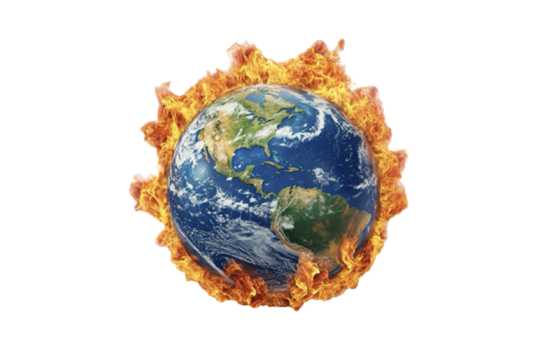In a Duolingo/ PTE/ IELTS cause-solution essay, your primary task is to identify the underlying causes of a given issue and propose practical and effective solutions to address these root causes. This form of academic writing evaluates your ability to critically analyse problems, determine why they occur, and present viable strategies to mitigate or resolve these issues. To excel in writing a perfect Duolingo/ PTE/ IELTS cause-solution essay, consider the following concise guidelines:
1. Issue Clarification: (1st paragraph)
Begin by providing a clear and concise description of the issue that you will be addressing in your essay. This is done by paraphrasing the question (cause) itself.
2. Cause Analysis: (2nd paragraph)
In dedicated paragraph(s), explore the causes that give rise to the issue. Be specific and provide supporting evidence or examples to strengthen your claims. Your goal is to identify the factors that contribute to the problem’s existence.
3. Solution Proposals: (3rd paragraph)
Devote separate paragraph(s) to presenting practical solutions to the identified causes. Each solution should be clearly explained, outlining how it can be implemented and why it is effective.
4. Conclusion: Begin your concluding section with “In conclusion” or “To conclude,” and wrap up your essay. Remember not to introduce any new ideas in this part of your essay.
Below are a number of sample Duolingo/ PTE/ IELTS cause-solution essays that you can go through and familiarise yourself with:
Model Duolingo/ PTE/ IELTS cause-solution essays
1. In many major urban centers, overpopulation is a pressing issue. What are the key factors driving this population growth, and what strategies can be implemented to address this problem effectively?
VIEW MODEL ANSWER2. Cyberbullying has become a growing concern among teenagers. What are the root causes of cyberbullying, and how can society combat this issue?
3. Disparities in healthcare access are a major concern. What factors contribute to these disparities, and what steps can governments take to ensure equitable healthcare for all citizens?
4. Climate change is a global threat. What are the drivers of climate change, and how can nations reduce their carbon footprint and protect the environment?
5. Water scarcity is a critical problem in many regions. What leads to water scarcity, and how can governments and communities ensure a reliable and adequate water supply for everyone?
6. Educational inequality is a challenge in many countries. What are the causes of educational inequality, and what measures can improve access to quality education for all?
7. Gender inequality continues to persist in various aspects of society. What are the underlying causes of gender inequality, and how can societies work towards achieving gender equity?
8. Substance abuse and drug addiction are growing concerns. What drives addiction, and how can societies reduce addiction rates and provide better support for affected individuals?
9. Corruption remains a widespread issue in some countries. What fosters corruption, and what measures can be taken to combat it and promote transparency in government and business?
10. Youth unemployment is a significant problem in many regions. What triggers youth unemployment, and what policies should governments implement to address this problem effectively?
11. Excessive consumption of single-use plastics is a global environmental issue. What encourages the overuse of single-use plastics, and how can individuals and governments reduce plastic waste and promote sustainability?
12. Mental health stigma prevents many from seeking help. What generates this stigma, and what can be done to combat it and provide better support for individuals with mental health issues?
13. Access to affordable and high-quality education is a challenge in some regions. What leads to inadequate access to quality education, and what policies can be implemented to make education more accessible and improve its quality?
14. Child labor is a persistent issue in certain industries. What drives child labor, and how can it be eliminated, along with the protection of children’s rights worldwide?
15. Inadequate access to clean and safe housing is a concern in many regions. What contributes to housing inadequacy, and what measures can be taken to ensure that everyone has access to adequate housing?
16. Inefficient public transportation systems lead to increased traffic congestion. What exacerbates this inefficiency, and how can cities improve public transportation and reduce traffic-related problems?
17. Overfishing threatens marine ecosystems. What leads to overfishing, and what can be done to promote sustainable fishing practices and protect the world’s oceans?
18. In some areas, air pollution is a major health concern. What results in air pollution, and how can governments reduce it and improve air quality for their citizens?
19. Inadequate access to prenatal and maternal healthcare services contributes to maternal mortality. What contributes to this lack of access, and what can be done to improve healthcare for pregnant women and reduce maternal mortality rates?
20. The preservation of cultural heritage is essential, but many historical sites are at risk. What endangers cultural heritage, and what measures can be taken to protect and preserve it for future generations?
21. The decline of bee populations threatens global food security. What leads to the decline of bee populations, and what steps can be taken to protect and restore bee populations and maintain pollination services?
22. Bullying in schools affects many students. What fuels bullying, and what can schools and communities do to prevent it and provide a safe and supportive environment for all students?
23. Inadequate access to water and sanitation facilities is a health concern in many parts of the world. What contributes to this lack of access, and what measures can be taken to ensure that clean and safe water and sanitation are accessible to all?
24. Human trafficking continues to be a grave concern in some countries. What promotes human trafficking, and what steps can be taken to combat it and protect the rights of victims?
25. Excessive use of antibiotics has led to antibiotic resistance. What encourages antibiotic resistance, and how can we promote responsible antibiotic use and address the issue of drug-resistant bacteria?
26. Inadequate access to clean drinking water leads to waterborne diseases in many areas. What triggers this issue, and what strategies can be employed to ensure safe and clean drinking water for all?
27. Food insecurity is a challenge in some regions, even in developed countries. What causes food insecurity, and how can we address the issue and ensure that everyone has access to nutritious food?
28. Language barriers can hinder the integration of immigrants into their new communities. What creates language barriers, and what can be done to help immigrants overcome them and become active members of society?
29. The preservation of natural habitats is crucial for biodiversity. What endangers natural habitats and ecosystems, and what steps can be taken to protect and conserve them for future generations?
30. The digital divide hinders access to information and education for many individuals. What contributes to this digital divide, and how can it be bridged to ensure equal access to digital resources?
31. Child labor remains a persistent issue in certain industries. What fosters child labor, and how can it be eliminated, along with the protection of children’s rights worldwide?
32. Inadequate access to safe sanitation facilities is a health concern in many parts of the world. What contributes to this lack of access, and what measures can be taken to ensure access to clean and safe sanitation for all?
33. Human trafficking continues to be a grave concern in some countries. What promotes human trafficking, and what steps can be taken to combat it and protect the rights of victims?
34. Excessive use of antibiotics has led to antibiotic resistance. What encourages antibiotic resistance, and how can we promote responsible antibiotic use and address the issue of drug-resistant bacteria?
35. Inadequate access to clean drinking water leads to waterborne diseases in many areas. What triggers this issue, and what strategies can be employed to ensure safe and clean drinking water for all?
36. Food insecurity is a challenge in some regions, even in developed countries. What fosters food insecurity, and how can we address the issue and ensure that everyone has access to nutritious food?
37. Language barriers can hinder the integration of immigrants into their new communities. What gives rise to language barriers, and what can be done to help immigrants overcome them and become active members of society?
38. The preservation of natural habitats is crucial for biodiversity. What endangers natural habitats and ecosystems, and what steps can be taken to protect and conserve them for future generations?
39. The digital divide hinders access to information and education for many individuals. What contributes to this digital divide, and how can it be bridged to ensure equal access to digital resources?
40. Child labor remains a persistent issue in certain industries. What fosters child labor, and how can it be eliminated, along with the protection of children’s rights worldwide?
41. Inadequate access to safe sanitation facilities is a health concern in many parts of the world. What contributes to this lack of access, and what measures can be taken to ensure access to clean and safe sanitation for all?
42. The spread of fake news and misinformation has become a problem in
the digital age. What fuels the spread of false information, and what strategies can be employed to combat it and promote media literacy?
43. Insufficient access to electricity is a challenge in some remote areas. What leads to this lack of access, and how can renewable energy sources be harnessed to provide electricity to underserved communities?
44. The rise of extremist ideologies poses a threat to global security. What supports the rise of extremism, and what actions can nations take to counter extremism and promote peace and tolerance?
45. Low levels of civic engagement and voter participation are issues in some democracies. What contributes to low civic engagement, and how can citizens be encouraged to actively participate in the political process?
46. The opioid crisis is a growing concern in some countries. What drives the opioid epidemic, and what can be done to address it and provide support for individuals struggling with addiction?
47. In some regions, deforestation is a significant environmental issue. What drives deforestation, and how can governments and communities promote forest conservation and sustainable land use?
48. Access to quality education for children with disabilities is often limited. What gives rise to this lack of access, and how can schools and communities provide better educational opportunities for children with special needs?
49. Inadequate access to clean and safe housing is a concern in many regions. What contributes to housing inadequacy, and what measures can be taken to ensure that everyone has access to adequate housing?
50. Inefficient public transportation systems lead to increased traffic congestion. What intensifies this inefficiency, and how can cities improve public transportation and reduce traffic-related problems?
51. Overfishing threatens marine ecosystems. What promotes overfishing, and what can be done to promote sustainable fishing practices and protect the world’s oceans?
52. In some areas, air pollution is a major health concern. What results in air pollution, and how can governments reduce it and improve air quality for their citizens?
53. Inadequate access to prenatal and maternal healthcare services contributes to maternal mortality. What contributes to this lack of access, and what can be done to improve healthcare for pregnant women and reduce maternal mortality rates?
54. The preservation of cultural heritage is essential, but many historical sites are at risk. What endangers cultural heritage, and what measures can be taken to protect and preserve it for future generations?
55. The decline of bee populations threatens global food security. What leads to the decline of bee populations, and what steps can be taken to protect and restore bee populations and maintain pollination services?
56. Bullying in schools affects many students. What fuels bullying, and what can schools and communities do to prevent it and provide a safe and supportive environment for all students?
57. Inadequate access to water and sanitation facilities is a health concern in many parts of the world. What contributes to this lack of access, and what measures can be taken to ensure that clean and safe water and sanitation are accessible to all?
58. Human trafficking continues to be a grave concern in some countries. What promotes human trafficking, and what steps can be taken to combat it and protect the rights of victims?
59. Excessive use of antibiotics has led to antibiotic resistance. What encourages antibiotic resistance, and how can we promote responsible antibiotic use and address the issue of drug-resistant bacteria?
60. Inadequate access to clean drinking water leads to waterborne diseases in many areas. What triggers this issue, and what strategies can be employed to ensure safe and clean drinking water for all?
61. Food insecurity is a challenge in some regions, even in developed countries. What causes food insecurity, and how can we address the issue and ensure that everyone has access to nutritious food?
62. Language barriers can hinder the integration of immigrants into their new communities. What creates language barriers, and what can be done to help immigrants overcome them and become active members of society?
63. The preservation of natural habitats is crucial for biodiversity. What endangers natural habitats and ecosystems, and what steps can be taken to protect and conserve them for future generations?
64. The digital divide hinders access to information and education for many individuals. What contributes to this digital divide, and how can it be bridged to ensure equal access to digital resources?
65. Child labor remains a persistent issue in certain industries. What fosters child labor, and how can it be eliminated, along with the protection of children’s rights worldwide?
66. Inadequate access to safe sanitation facilities is a health concern in many parts of the world. What contributes to this lack of access, and what measures can be taken to ensure access to clean and safe sanitation for all?
67. The spread of fake news and misinformation has become a problem in the digital age. What fuels the spread of false information, and what strategies can be employed to combat it and promote media literacy?
68. Insufficient access to electricity is a challenge in some remote areas. What leads to this lack of access, and how can renewable energy sources be harnessed to provide electricity to underserved communities?
69. The rise of extremist ideologies poses a threat to global security. What supports the rise of extremism, and what actions can nations take to counter extremism and promote peace and tolerance?
70. Low levels of civic engagement and voter participation are issues in some democracies. What contributes to low civic engagement, and how can citizens be encouraged to actively participate in the political process?
71. The opioid crisis is a growing concern in some countries. What drives the opioid epidemic, and what can be done to address it and provide support for individuals struggling with addiction?
72. Access to mental healthcare services is limited in many areas. What contributes to this lack of access, and what strategies can be implemented to ensure that individuals have adequate mental health support?
73. Access to quality education for children with disabilities is often limited. What gives rise to this lack of access, and how can schools and communities provide better educational opportunities for children with special needs?
74. Inadequate access to clean and safe housing is a concern in many regions. What contributes to housing inadequacy, and what measures can be taken to ensure that everyone has access to adequate housing?
75. Inefficient public transportation systems lead to increased traffic congestion. What intensifies this inefficiency, and how can cities improve public transportation and reduce traffic-related problems?
76. Overfishing threatens marine ecosystems. What promotes overfishing, and what can be done to promote sustainable fishing practices and protect the world’s oceans?
77. In some areas, air pollution is a major health concern. What results in air pollution, and how can governments reduce it and improve air quality for their citizens?
78. Inadequate access to prenatal and maternal healthcare services contributes to maternal mortality. What contributes to this lack of access, and what can be done to improve healthcare for pregnant women and reduce maternal mortality rates?
79. The preservation of cultural heritage is essential, but many historical sites are at risk. What endangers cultural heritage, and what measures can be taken to protect and preserve it for future generations?
80. The decline of bee populations threatens global food security. What leads to the decline of bee populations, and what steps can be taken to protect and restore bee populations and maintain pollination services?
81. Bullying in schools affects many students. What fuels bullying, and what can schools and communities do to prevent it and provide a safe and supportive environment for all students?
82. Inadequate access to water and sanitation facilities is a health concern in many parts of the world. What contributes to this lack of access, and what measures can be taken to ensure that
clean and safe water and sanitation are accessible to all?
83. Human trafficking continues to be a grave concern in some countries. What promotes human trafficking, and what steps can be taken to combat it and protect the rights of victims?
84. Excessive use of antibiotics has led to antibiotic resistance. What encourages antibiotic resistance, and how can we promote responsible antibiotic use and address the issue of drug-resistant bacteria?
85. Inadequate access to clean drinking water leads to waterborne diseases in many areas. What triggers this issue, and what strategies can be employed to ensure safe and clean drinking water for all?
86. Food insecurity is a challenge in some regions, even in developed countries. What causes food insecurity, and how can we address the issue and ensure that everyone has access to nutritious food?
87. Language barriers can hinder the integration of immigrants into their new communities. What creates language barriers, and what can be done to help immigrants overcome them and become active members of society?
88. The preservation of natural habitats is crucial for biodiversity. What endangers natural habitats and ecosystems, and what steps can be taken to protect and conserve them for future generations?
89. The digital divide hinders access to information and education for many individuals. What contributes to this digital divide, and how can it be bridged to ensure equal access to digital resources?
90. Child labor remains a persistent issue in certain industries. What fosters child labor, and how can it be eliminated, along with the protection of children’s rights worldwide?
91. Inadequate access to safe sanitation facilities is a health concern in many parts of the world. What contributes to this lack of access, and what measures can be taken to ensure access to clean and safe sanitation for all?
92. The spread of fake news and misinformation has become a problem in the digital age. What fuels the spread of false information, and what strategies can be employed to combat it and promote media literacy?
93. Insufficient access to electricity is a challenge in some remote areas. What leads to this lack of access, and how can renewable energy sources be harnessed to provide electricity to underserved communities?
94. The rise of extremist ideologies poses a threat to global security. What supports the rise of extremism, and what actions can nations take to counter extremism and promote peace and tolerance?
95. Low levels of civic engagement and voter participation are issues in some democracies. What contributes to low civic engagement, and how can citizens be encouraged to actively participate in the political process?
96. The opioid crisis is a growing concern in some countries. What drives the opioid epidemic, and what can be done to address it and provide support for individuals struggling with addiction?
97. Internet privacy concerns are growing due to the increasing use of technology. What leads to privacy issues on the internet, and what measures can individuals and governments take to safeguard online privacy?
98. Access to quality education for children with disabilities is often limited. What gives rise to this lack of access, and how can schools and communities provide better educational opportunities for children with special needs?
99. Inadequate access to clean and safe housing is a concern in many regions. What contributes to housing inadequacy, and what measures can be taken to ensure that everyone has access to adequate housing?
100. Inefficient public transportation systems lead to increased traffic congestion. What intensifies this inefficiency, and how can cities improve public transportation and reduce traffic-related problems?
Unlock your IELTS success at Lifestyle Training Centre! With expert guidance, personalised coaching, and tailored feedback, we’ll help you master Writing Task 2 and achieve your dream band score. Join us today and elevate your preparation!
IELTS Speaking Task Topics
Click on any topic to explore more!
Names

Learn about the importance of names and their cultural significance.
Study / Job

Discuss various aspects of studying and working in different fields.
Hometown

Explore the charm of your hometown and its unique features.
Accomodation

Understand various types of accommodation and living situations.
Weather

Learn about how weather influences daily life and activities.
Time

Discuss the concept of time, its importance, and time management.
Television

Talk about the role of television in modern entertainment.
Museum

Discuss the cultural importance of museums and historical exhibits.
Holidays

Explore the significance of holidays and different celebrations.
Films

Learn about the impact of films on culture and society.
Leisure Time

Discuss how leisure activities impact personal well-being.
Sport

Talk about the role of sports in health, entertainment, and culture.
Vegetables and Fruits

Discuss the health benefits and importance of fresh produce.
Maths

Explore the role of mathematics in various aspects of life.
Sky

Discuss the beauty and scientific significance of the sky.
Clothes&Fashion

Explore how clothing reflects culture and personal expression.
Weekend

Discuss the importance of weekends and ways people relax.
Reading

Learn about the importance of reading and various reading habits.
Sleep

Explore how sleep impacts physical and mental well-being.
Trees&Plants

Discuss the environmental and health benefits of plants.
Newspaper

Discuss the evolving role of newspapers in the digital age.
Texting

Explore the role of text messaging in modern communication.
Memorising

Learn techniques for improving memory and memorization.
Travelling

Discuss the importance and impact of traveling in modern society.
Communication

Explore the modes and significance of communicating well
Letter&Email

Explore the differences and significance of letters vs. emails.
Swimming

Discuss the benefits of swimming for health and fitness.
Snacks

Explore the role of snacks in daily nutrition and lifestyle.
Photography

Discuss photography’s cultural and artistic significance.
Help

Talk about the importance of offering and receiving help.
History

Discuss historical events and their impact on modern society.
Handwriting

Explore the significance of handwriting in education and culture.
Music

Learn about the influence of music on emotions and society.
Colours

Discuss how colours affect perception and mood.
Teachers

Explore the role of teachers in shaping students’ futures.
Being Alone

Talk about the experience and benefits of spending time alone.
Teamwork

Learn the importance of teamwork in professional and social contexts.
Countryside & City

Explore the charm and benefits of living in the countryside.
Social Media

Discuss the impact of social media on society and relationships.
Friends

Explore the importance of friendships in life.
Artificial Intelligence (AI)

Talk about the future of AI and its role in society.
Climate Change

Discuss the causes and consequences of climate change.
Transportation

Explore different modes of transportation in your area.
Sustainable Transportation

Explore ways to make transportation more environmentally friendly.
Space Exploration

Learn about the latest advancements in space exploration.
Shopping

Explore how shopping influences culture and the economy.
Modern Technology

Discuss how modern technology is reshaping society.
Technology

Learn about the role of technology in everyday life.
Sustainable Living

Explore ways to live sustainably for the future of the planet.
Globalisation

Learn about the effects of globalisation on society and economies.
Global Warming

Discuss the causes, effects, and solutions to global warming.
Gender Equality

Explore the importance of gender equality in modern society.
Health and Fitness

Discuss the importance of maintaining a healthy lifestyle.
Renewable Energy

Learn about renewable energy sources and their impact on the environment.
Cultural Traditions in Kerala

Explore the unique cultural traditions of Kerala, your hometown.
Cultural Traditions in Your Country

Learn about the cultural traditions in your country.
Education System

Discuss the education system in your country and its effectiveness.
Traditional Cuisine

Explore the significance of traditional cuisines in your culture.
Do you need printed IELTS/ OET practice material? Place your order today. Available now for just Rs: 1,100 (including shipping all across India) Contact us at our WhatsApp number: +91 9886926773 to place your order. (Free for LTC students)

We hope this information has been valuable to you. If so, please consider a monetary donation to Lifestyle Training Centre via UPI. Your support is greatly appreciated.

Would you like to undergo training for OET, PTE, IELTS, Duolingo, Phonetics, or Spoken English with us? Kindly contact us now!
📱 Call/WhatsApp/Text: +91 9886926773
📧 Email: mail@goltc.in
Visit us in person by following the directions on Google Maps. We look forward to welcoming you to the Lifestyle Training Centre.
Follow Lifestyle Training Centre on social media:
Thank you very much!
